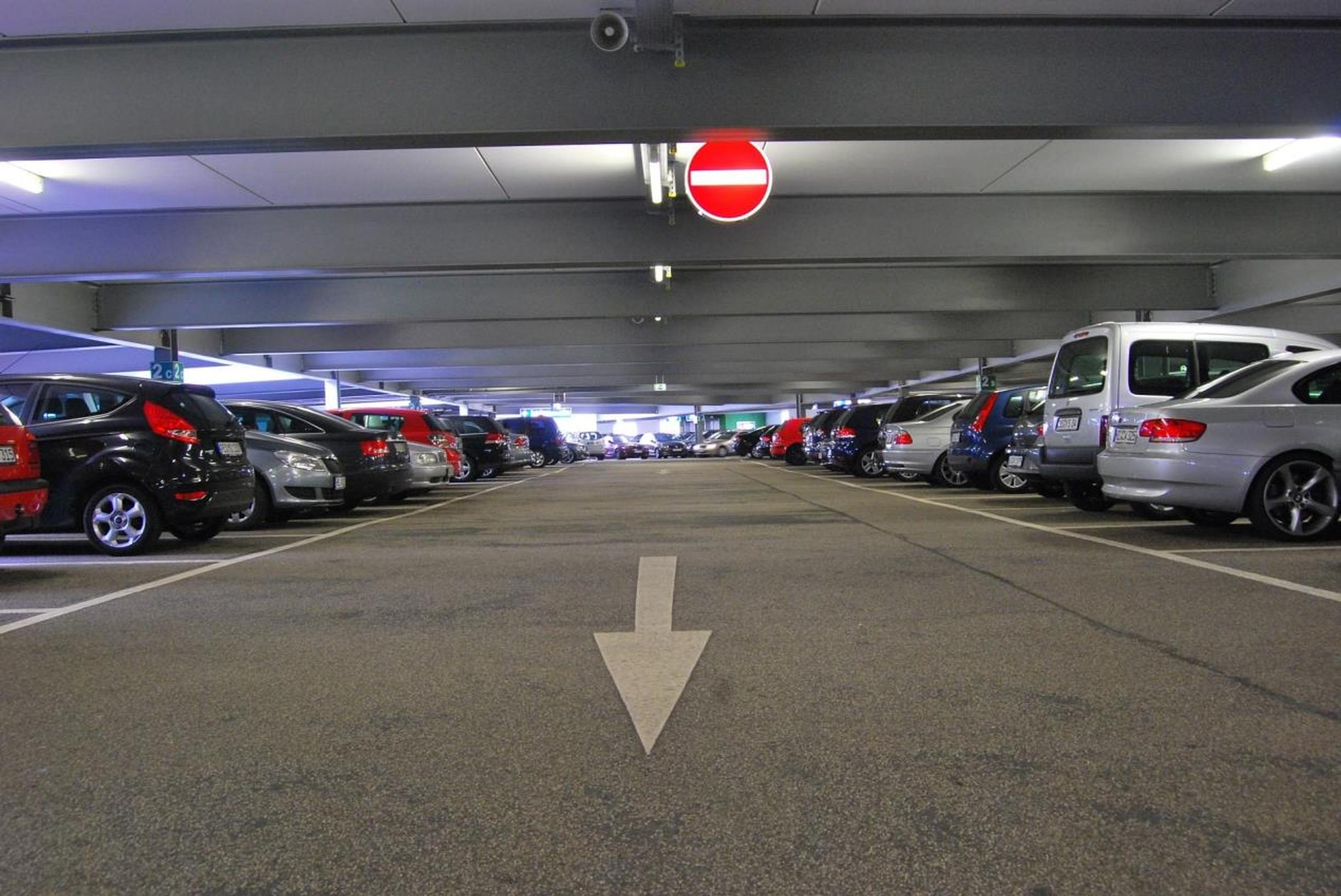
The fire that destroyed an unsprinklered airport terminal car park last month caused disruption to tens of thousands of passengers, left hundreds stranded at the airport, and impacted close to 1,500 cars. With significant fires in multi-storey car parks over the last five years, why are we not learning from these and looking to protect these buildings with sprinklers?
The fire on 10 October at London Luton Airport’s Terminal Car Park 2 led to a “significant structural collapse” with up to 1,500 vehicles destroyed or damaged. Such was the intensity of the fire that broke out on level three, witnesses reported hearing significant bangs as tyres and car elements were overwhelmed by the heat.
Fifteen fire engines and more than 100 firefighters from Bedfordshire, Buckinghamshire, Cambridgeshire, Hertfordshire, Northamptonshire and London fought the blaze. Flights were suspended until 3pm the following day, with hundreds of passengers stranded at the airport as their cars were trapped in the collapsed car park or an adjacent one.
Surprisingly, shortly after the fire a spokesperson for the local council, which owns the airport, noted that they had “not seen this coming”. The challenge of fire is that it is not predictable. However, there have been several pointers to the potential scale of a fire. This catastrophic fire is not a one-off event as we have seen major fires in car parks on previous occasions. As recently as August, a blaze in a two-storey car park in Japan spread to around 150 cars while on New Year’s Eve 2017, a fire at the Echo Arena multi-storey car park in Liverpool resulted in over 1,150 cars being destroyed. The car park had to be demolished. This fire led to alerts from several bodies as fires were noted in other territories in multi-storey car parks ranging from a shopping mall in Ireland, and to another airport car park in Norway.
Many people are questioning the lack of sprinklers in the Luton Airport car park. The fact that the structure was relatively new, having been built in 2019 at a reported cost of £20m has also added to this. At the same time, unlike the Liverpool Arena fire, the fire at Luton Airport had a much more direct impact on people with what was estimated at 30,000 travellers affected in the immediate aftermath of the event.
While there was speculation on the cause and the originating vehicle, the real focus of our attention should be how rapidly it spread amongst numerous vehicles of differing fuel sources as can be seen in early videos of the fires. In the absence of any other intervention fire will spread, and when the fire service arrive they are faced with a large fire, which is hard to stop. The scale of fire endangers surrounding buildings, and the collapsing construction can impact attached structures.
The current regulatory guidance does not require sprinklers to be installed, but this is not keeping up with fire load of modern vehicles. The guidance can be traced back to fire tests and observations from the late 1960s and ‘70s. It foresaw the rise of plastic components but not their extent. It is a fact that the average car today has significant amounts of plastics and other combustibles in their construction. In short, modern cars can burn very quickly producing much larger and hotter fires than was previously considered possible. In fact, government have known this from their own research carried out in the late 2000s.
Whilst people can point to the rarity of fires in car parks, they remain a serious concern, as they can easily spread. This current devastating fire example is an airport car park but we must also consider that car parks are positioned below residential buildings, offices or adjacent to or on top of shopping centres. Though their construction may differ slightly, the fire risk is fundamentally the same across all types of car parks.
Going forward, we need to question why regulations don’t call for sprinklers. Installing sprinkler systems is the most effective prevention method. Now is the time for a rethink to our approach in order to mitigate the impact of fire and safeguard these buildings and most importantly those living, working and enjoying spaces attached to them.
Iain Cox is chair of Business Sprinkler Alliance.
The BSA was established in 2010 and is an alliance of fire safety professionals. The BSA’s founding members are the National Fire Chiefs’ Council, the European and National Fire Sprinkler Networks, the British Automatic Fire Sprinkler Association, commercial insurer FM Global, and the Fire Protection Association.
TransportXtra is part of Landor LINKS
© 2025 TransportXtra | Landor LINKS Ltd | All Rights Reserved
Subscriptions, Magazines & Online Access Enquires
[Frequently Asked Questions]
Email: subs.ltt@landor.co.uk | Tel: +44 (0) 20 7091 7959
Shop & Accounts Enquires
Email: accounts@landor.co.uk | Tel: +44 (0) 20 7091 7855
Advertising Sales & Recruitment Enquires
Email: daniel@landor.co.uk | Tel: +44 (0) 20 7091 7861
Events & Conference Enquires
Email: conferences@landor.co.uk | Tel: +44 (0) 20 7091 7865
Press Releases & Editorial Enquires
Email: info@transportxtra.com | Tel: +44 (0) 20 7091 7875
Privacy Policy | Terms and Conditions | Advertise
Web design london by Brainiac Media 2020